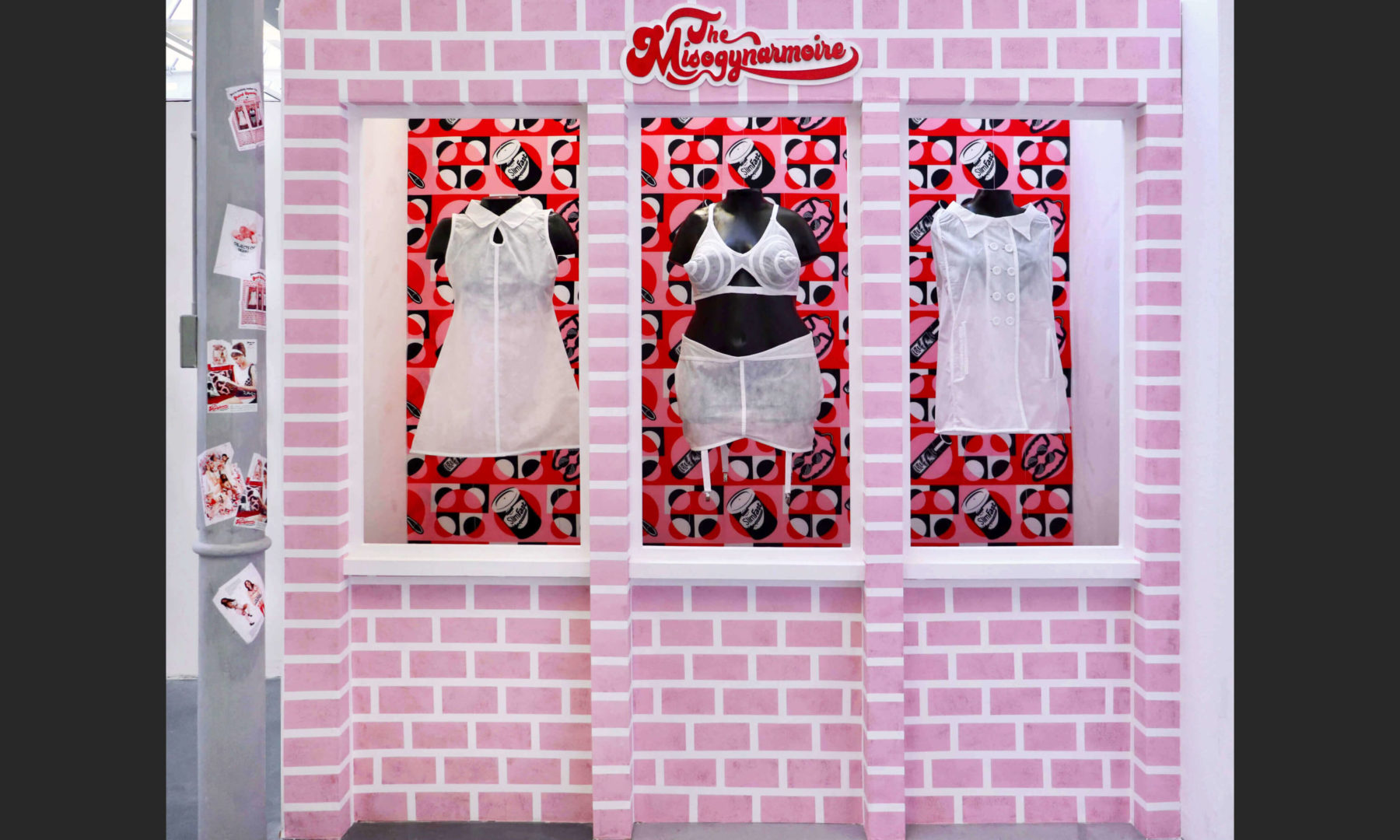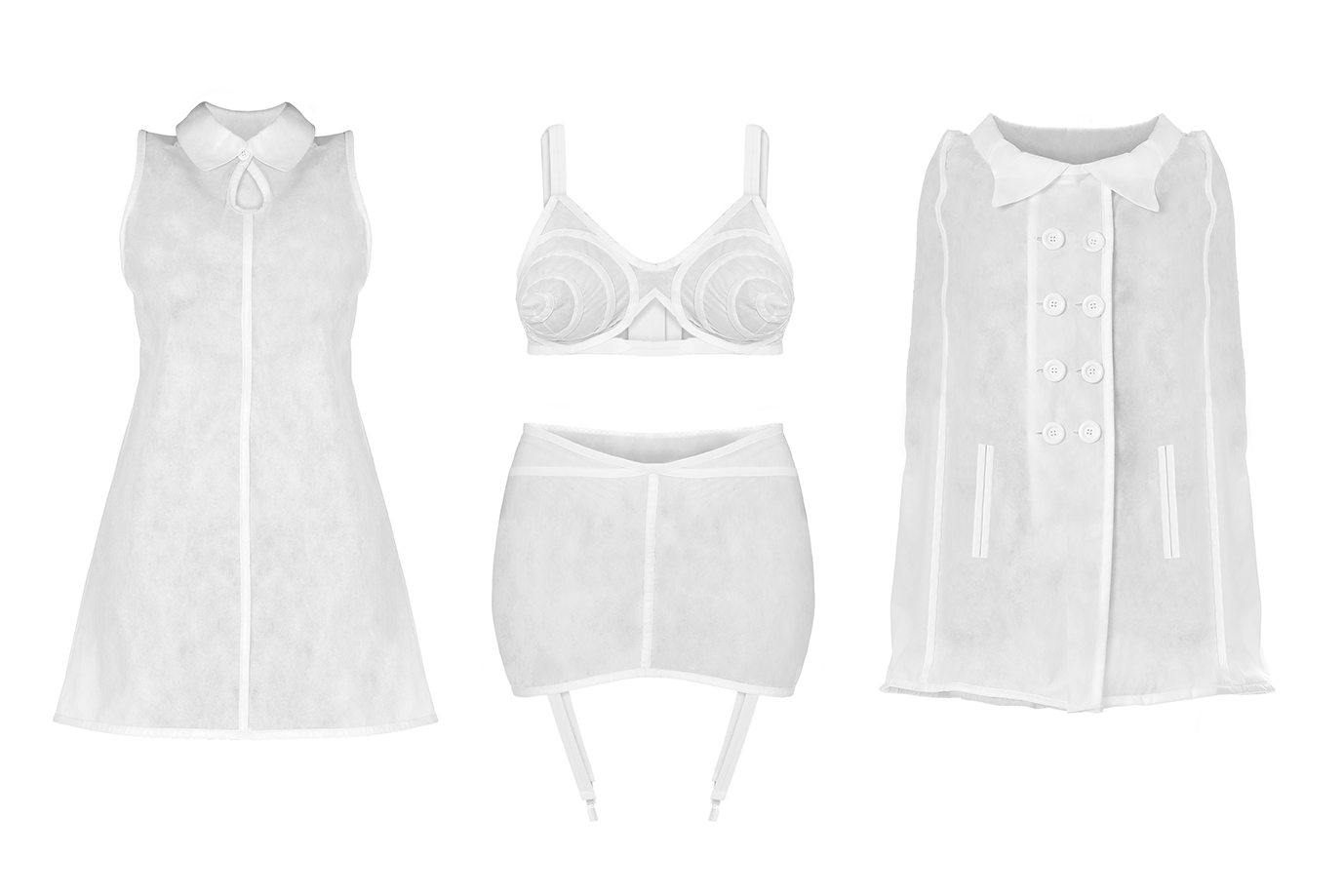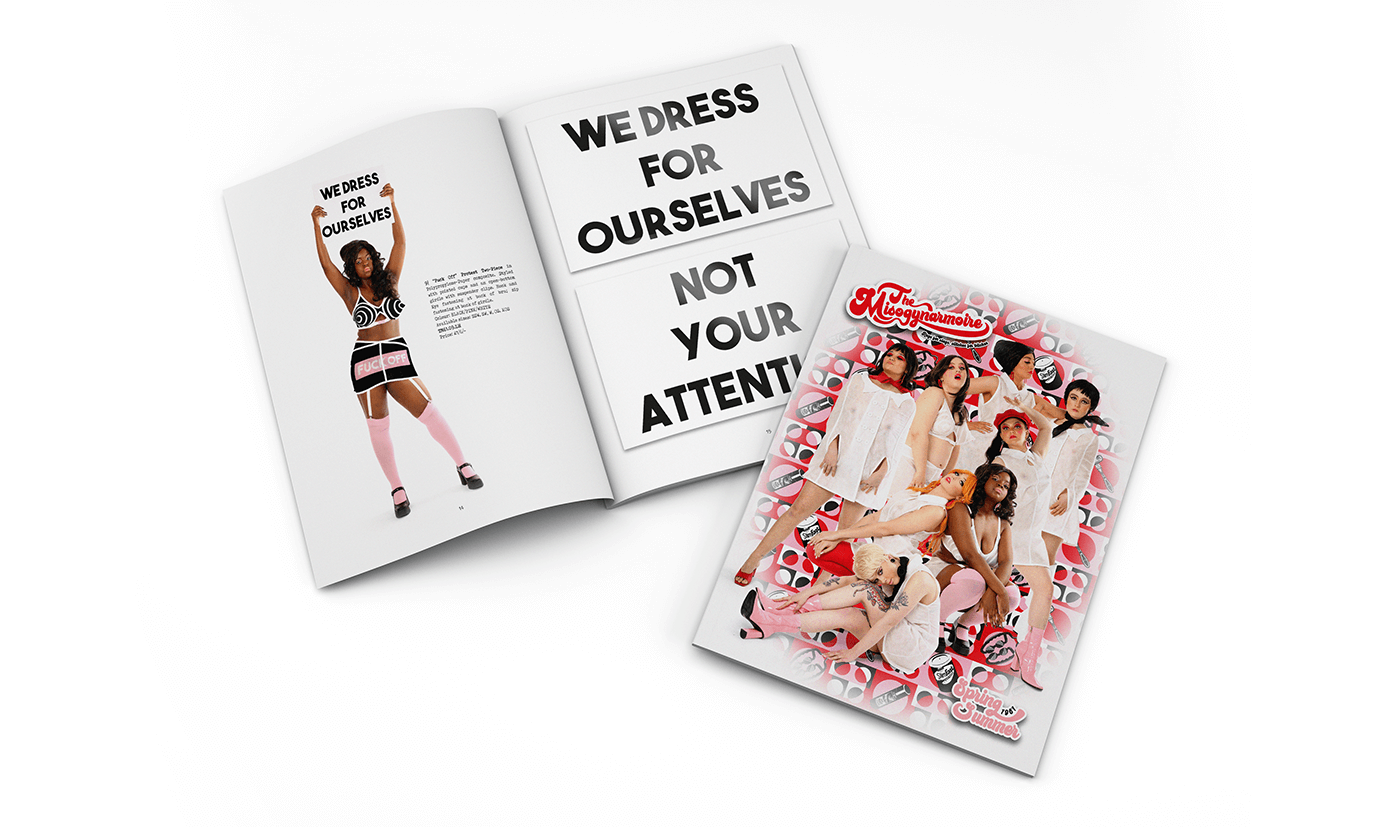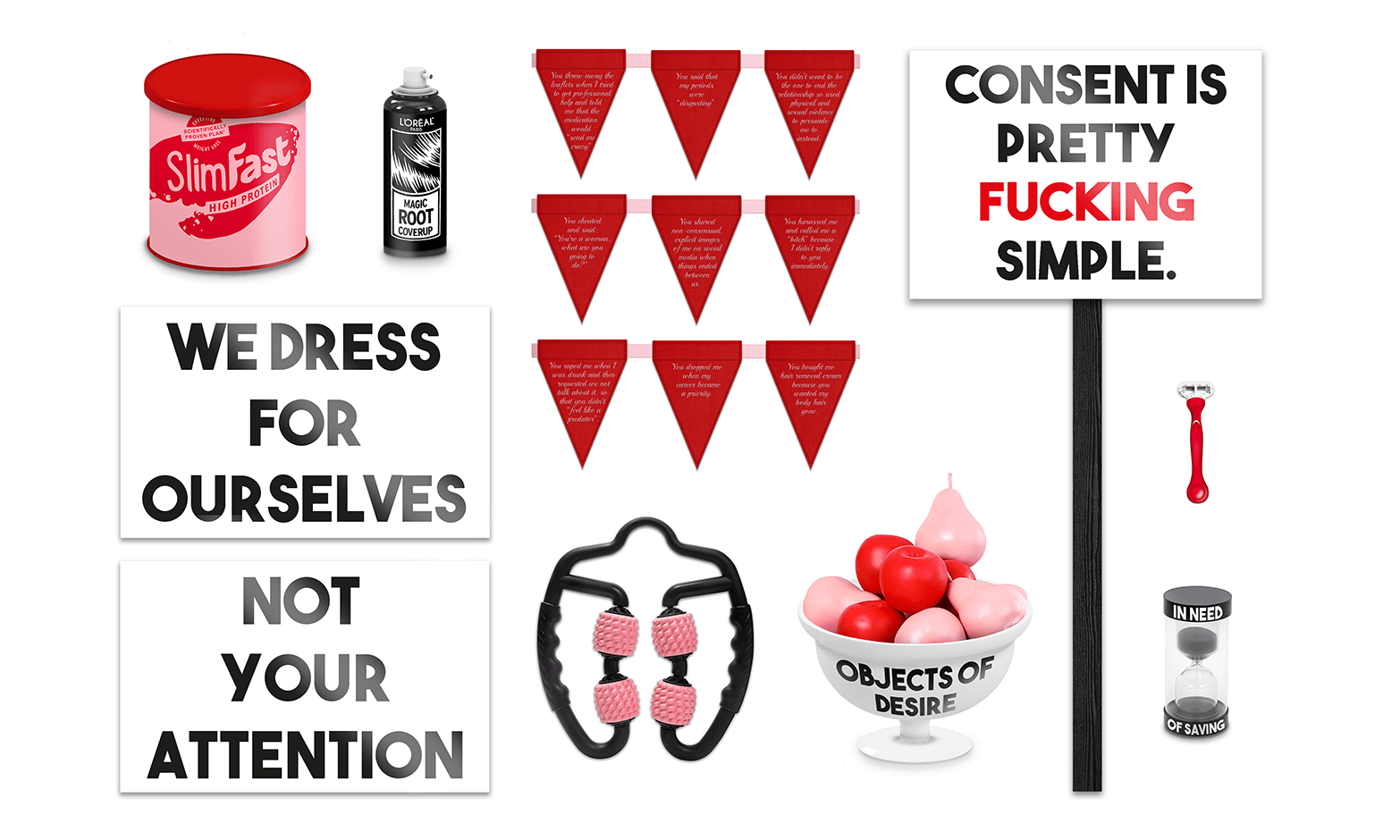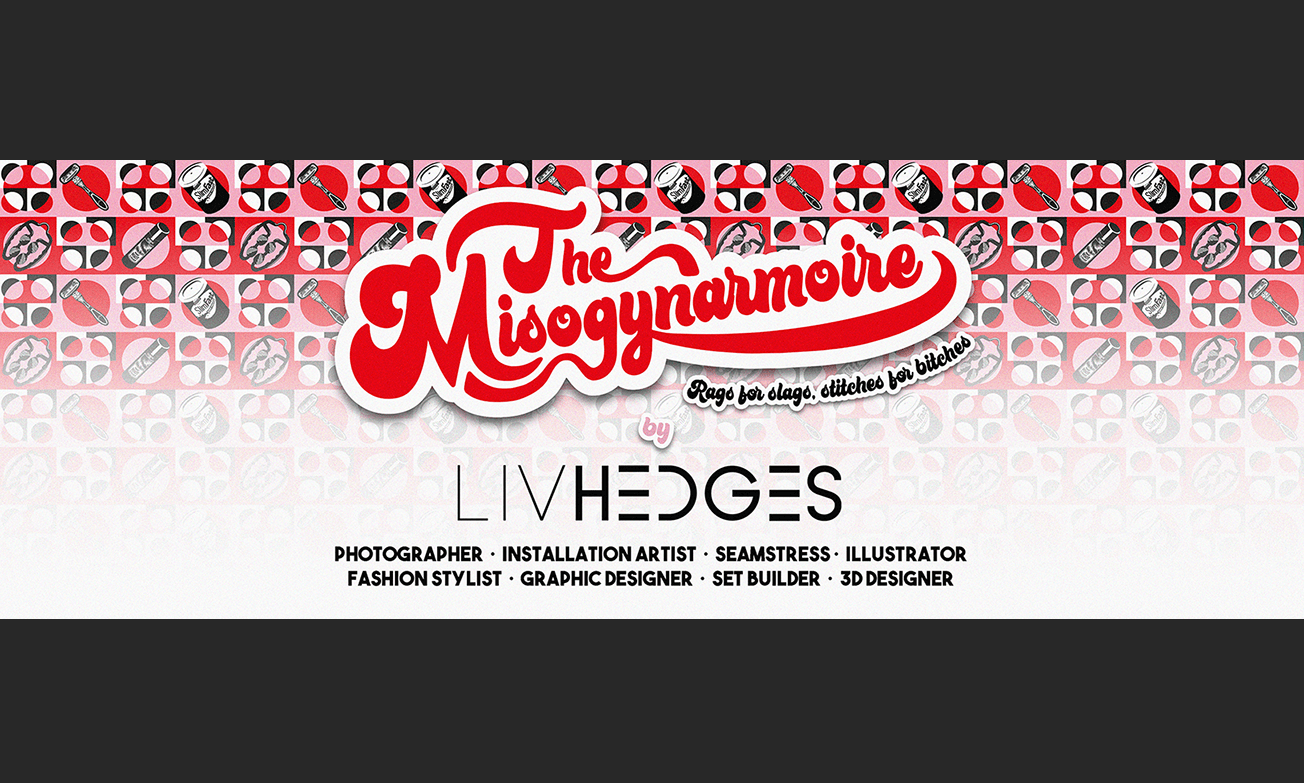2022: Art & Design BA Hons
Showcase
Statement
The Misogynarmoire
(pronounced muh • so • juh • naam • waa)
Revolving around a fictional women’s clothing retailer, The Misogynarmoire is a multidisciplinary installation that marries set building, photography, textiles, sound, and marketing design to form an immersive 1960’s London high-street experience.
The 1960’s witnessed the emergence of second-wave feminism, resulting in an era whose coexistence of rebellion, self-expression and disentanglement was equally as synonymous with female oppression.
Arguably, the principles in which women exist today closely reflects this duality of 1960’s feminist culture. Therefore, the purpose of adopting this aesthetic is to narrate what it’s like to be female in contemporary society, through lenses of retro fashion, art and language.
Inspired by the 1960’s paper dress craze, the entirety of The Misogynarmoire’s product line is constructed from a polypropylene-paper composite. This medium, whose most recent use has been for disposable COVID-19 face masks, presents a modern alternative to the original Duraweave™ material, that points towards patriarchal restriction and female safety. The garments are available in a range of colour and pattern preferences, as displayed in the supporting catalogue, each lending themselves to issues surrounding present-day misogyny; these issues concern, but are not limited to, beauty ideals, body image, catcalling and ‘red flags’ within relationships.
Upon interacting with the work, viewers are automatically assigned the role of the passer-by, able to voyeuristically navigate the installation through the shop’s windows only, suggesting a barrier to the innerworkings of a women’s world that we can catch glimpses of but cannot enter.
The accompanying catalogue is categorised into three chapters, which are as follows:
1. Underwear that references real, documented experiences of women regarding misogyny through language, commenting on themes of protest, cat calling and relationship “red flags”.
2. Dresses highlighting the absurdity of female beauty ideals, consulting the merchandise that is marketed to women to manipulate and, in many cases, remove their innate features
3. Outerwear that focuses on the media’s acknowledgement and categorisation of women’s body types, and the way in which this promotes dysmorphia through literal female objectification.


